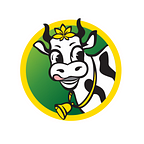How does Akshayakalpa create a Balanced diet for Cows?
Balance is a feature of naturally occurring things. One cannot emphasize enough on the importance of a balanced diet. Just like humans, cows need a balanced diet too.
A cow’s digestive system is more complex and works differently as compared to other animals. Did you know that only ruminant beings (the cow being one of them) can digest grass? Yes, that is true. A cow’s system is designed primarily to absorb nutrition out of grass-based food.
Dairy Cows require the right amount of energy to produce nutritious milk. Cows can receive this nutrition from a balanced diet, which is a mix of various monocots, dicots, and tree and plant-based fodder depending on the region where they are born and raised.
At Akshayakalpa, we have spent a good time understanding the cow diet. We have created diets based on the nutritional needs of different ages of cows.
A healthy adult consumes around 40 kgs of fodder per day. The fodder is a mix of organic monocots, dicots, and green fodder based on the Total Mix Ration (TMR) as customized by Akshayakalpa. Our farmers grow all of these on their farms using Organic farming practices without any artificial fertilizers and pesticides.
Monocots and dicots are rich in protein content required by the cow. Monocots given to our cows include Ragi, Maize, local Jowar and Bajra. Dicots include Chana Dal, Green Grams, and Cow Pea. The tree and grass-based fodder is a source of minerals like iron, zinc, magnesium, etc. These include Subabul, Moringa, Agathi, Velvet bean, and Snail Foot. We also feed our cows with grasses like Napier. Our cows are also fed Azolla, which is a highly nutritious aquatic fern. It is a rich source of protein, and also contains calcium and magnesium.
Our cows are never force-fed. They have continuous access to clean drinking water and fodder. They choose when and how much they want to eat. We also believe that if the water is not fit for human consumption, it is not fit for our cows either.
Other than the fodder, our adult cows are also fed a supplement that fulfils calcium requirement and aids their vision, once in every three days.
To make sure that our cows have access to a nutritious fodder all year round, we also make silage out of it by fermenting the ration along with jaggery and salt. We use this when there is a shortage of fresh, green fodder.
A calf’s dietary requirements are different than that of the adult cow’s. A new-born is given only the mother’s milk up to ten days after its birth. Once it is older, we also start feeding it porridge made from organic Ragi and Maize, along with the mother’s milk for up to three months.
Our farmers work really hard when it comes to taking care of our cows so that our consumers can have the best quality of milk.
Fun fact: Cows can spend up to eight hours chewing the cuds!
